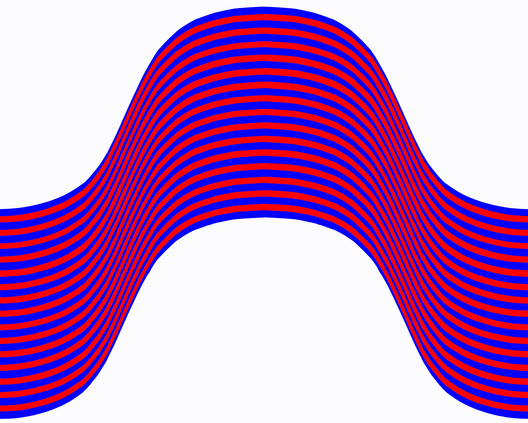Gustav Theodor Fechner1801–1887
Fechner integrated Weber’s fraction to found the discipline of psychophysics. Fechner’s insight was that the mental and material worlds could be united mathematically in the domains of sensory and stimulus intensities. The new discipline was defined in his Elemente der Psychophysik (1860): “Psychophysics should be understood here as an exact theory of the functionally dependent relations of body and soul or, more generally, of the material and the mental, of the physical and the psychological worlds.” Fechner distinguished between an outer and an inner psychophysics; the former was concerned with the sensation and stimulus intensity, and the latter with the relation between brain process and sensations. He realised that experiments in his day would be confined to outer psychophysics, but these were seen as necessary steps towards understanding inner psychophysics. Fechner refined the methods Weber employed to measure difference thresholds and listed three: the method of just noticeable differences (now called the method of limits), the method of right and wrong cases (method of constant stimuli), and the method of average error (method of adjustment). Accepting the validity of Weber’s fraction, and naming it Weber’s law, he assumed that equal stimulus differences corresponded to equal sensation differences. Sensory magnitude could be assigned values according to the number of just noticeable differences above the absolute threshold. Starting from the absolute threshold the stimulus intensities corresponding to successive difference thresholds could be calculated, if the Weber fraction is known, and plotted. The curve is logarithmic, and it can be expressed mathematically: sensory magnitude is proportional to the logarithm of stimulus magnitude - the lawful relationship that bears Fechner’s name. In his eighth decade Fechner applied his quantitative approach to the study of beauty and founded the subject of experimental aesthetics. Fechner was born near Halle and received a medical training at Leipzig University, where Weber lectured, though he never practiced medicine. After graduation Fechner was more attracted to physics than physiology, later lecturing and conducting research on electricity at the University of Leipzig. He also undertook a series of experiments on subjective colours and on the visibility of long lasting afterimages. These latter probably resulted in a temporary blindness, accompanied by a protracted depression, which led to his resignation from the chair of physics at Leipzig in 1840. After several years of isolation he returned to his earlier philosophical speculations, and eventually found a unity between his physical and philosophical views. Fechner began writing satirical and speculative pamphlets under the pseudonym of Dr. Mises when he was a medical student, and continued in this vein throughout his life; they reflected a continuing mental conflict between his scientific materialism and his philosophical pantheism. The coloured curves in which Fechner is just noticeable are a transformation of those that encompassed Weber: they, too, represent psychometric functions and Fechner’s portrait is to be found in the area of uncertainty.
